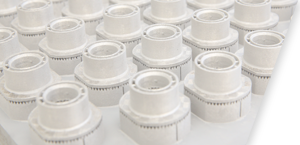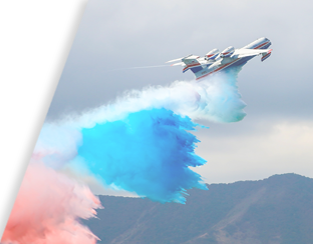
Rules for submitting, reviewing and publication of articles in the Journal «Aviation Materials and Technologies»
1. Submitting articles for publication.
1.1. «Aviation Materials and Technologies» is the journal aimed at informing scientific community about developments and latest achievements in basic and applied researches in the field of creation of new materials and technologies to produce parts and semi-finished products for aviation and space engineering.
1.2. Manuscript is presented to Editorial-publishing Department of NRC «Kurchatov Institute» – VIAM as a hard copy or computer media (software not worse, than Windows’2003).
Authors who are not the members of NRC «Kurchatov Institute» – VIAM should send their articles to the journal for publication and attach letter, addressed to Director General of NRC «Kurchatov Institute» – VIAM.
It is necessary to send article, scanned-copy of covering letter, Expert report and the page of article with signatures of all authors via e-mail: admin@viam.ru, and paper source documents – by postal address: 17, Radio Street, Moscow, 105005, Russia, with the notation «To Editorial Board of the journal «Aviation materials and technologies». Further information can be received by phone: +7 (499) 263-87-18.
1.3. Expert report on the possibility to be published in open press must be drawn up for a manuscript. The expert report is drawn up at the place of affiliation of each of the co-authors.
1.4. An article must be signed by all authors.
1.5. Every manuscript should be accompanied by abstract (volume 500–600 symbols), written in Russian and in English and printed on a separate page, in which a main content of work and keywords should be specified.
1.6. Authors` surnames and article title must be translated into English.
1.7. A list of authors with information about surname, name, total patronymic, post, telephone number and email address should be applied to a manuscript.
1.8. The recommended structure of manuscript:
– Title;
– Author names and affiliations;
– Abstract;
– Keywords;
– Introduction;
– Materials and Methods;
– Results;
– Discussion and Conclusions;
– Acknowledgements (if it necessary);
– References List.
1.9. The recommended volume of manuscript should be between 15 000 to 30 000 signs, including gaps.
1.10. Main parameters of manuscript:
– print – Times New Roman;
– dimension of print – 12;
– interval – 1,5;
– margins: upper – 2; lower – 2,5; left – 2,5; right – 2,5;
– automatic arrangement of transfer;
– formulas composition in Microsoft Equation 3.0;
– line drawings must be performed in Microsoft Power Point or Microsoft Excel program. A reference in text must be made for every drawing;
– microstructures, photos of devices, equipment must be presented electronically in Photoshop JPEG program;
– dimension of illustrations must not exceed А4 size;
– tables must be fulfilled using Microsoft Word program, numerated and have subject titles. A reference in text must be made for every table;
– meanings of physical characteristics should be given in SI-system.
1.11. Form of manuscript presentation:
– separate file for text + hard copy;
– numerated drawings as separate files + hard copy;
– numerated captions to drawings as separate file + hard copy.
1.12. Reference list in the end of manuscript must be thoroughly adjusted and unified in accordance with GOST 7.0.5–2008.
The References list should include at least 15 sources.
References in text must correspond strictly to a succession of a given list of literature.
References to non-published works (reports of scientific-research enterprises and plants, standards of enterprises etc.) are not allowed.
No more than one reference to works, accepted for publication, is allowed with indicating the issue of the journal, in which it will be published.
2. Procedure for reviewing articles.
2.1. All scientific articles submitting for publication in the journal should be reviewed for the purpose of expert estimate of their conformity to subject matter of the journal, scientific content, information value, novelty, quality of exposition and present relevance.
The maximum review period is one month.
The articles of Academicians and corresponding members of the Russian Academy of Sciences are not reviewed if Academician or corresponding member is the only or the first author of publication.
2.2. The procedure of “double blind” review is adopted for all articles submitted to the journal.
2.3. All reviewers are recognized specialists in the subject of reviewed materials and have publications in corresponding are for the last 3 years.
2.4. The article submitted to the editorial board is registered with appropriate reference number and forwarded to reviewing.
2.5. With positive review, the article is accepted for publication and it is included in the publication plan.
2.6. After receiving the review, the editors send its electronic copy to one of the authors, who is responsible for communication with the editors.
2.7. If the reviewer has any remarks on the article, it is sent to authors for correction and finalizing the materials in accordance with recommendations of the reviewer.
2.8. The authors must finalize and return the article to the editors within one month from the date of its transferring for correction, otherwise the corrected article is considered as newly submitted.
2.9. If the article is rejected, the editors send rejection notice of publication and attach the copy of negative review.
2.10. Reviewing and publication of articles are free of charge.
2.11. Article reviews are kept in the editorial office for 5 years.
2.12. The editors submit copies of reviews to the Ministry of education and science of the Russian Federation after receiving appropriate requests.
3. Requirements to reviews.
3.1. Recommended criteria of the reviewing:
– relevance of the manuscript subject;
– scientific novelty;
– compliance of the name and the content of the manuscript;
– logicality and sequence of the statement;
– carrying out the analysis in accordance with the declared subject;
– statistic processing of results (experiment);
– usage of scientific cognition methods;
– quoting of scientific information sources;
– scientific style of statement, terminology;
– compliance to the design rules.
3.2. Comments and suggestions to improve the manuscript of the reviewer should be objective and fundamental aimed at improving scientific and methodological levels of the manuscript.
3.3. The final part of the review should contain well-founded conclusions about the manuscript as a whole and the precise recommendation for expediency of its publication in the journal.
3.4. There are no requirements to form and volume of the review.


